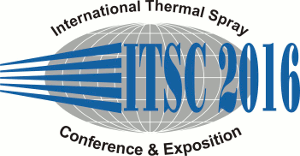
|
| Abstract No.: |
|
Scheduled at:
|
Tuesday, May 10, 2016, Room 3C + 3D 2:40 PM
Ceramics Coating II
|
|
| Title: |
Manufacturing technology of tribologically highly charged ceramic coatings on CFRP components
|
|
| Authors: |
Septimiu Popa* / University of Stuttgart, Germany
Patrick Weichand/ Insitute for Manufacturing Technologies of Ceramic Components and Composites, University of Stuttgart, Germany
Rainer Gadow/ Insitute for Manufacturing Technologies of Ceramic Components and Composites, University of Stuttgart, Germany
|
|
| Abstract: |
Carbon fiber-reinforced polymer (CFRP) is the preferred engineering material in a wide range of lightweight applications due to its low density, high stiffness and high specific strength. Despite these qualities, the CFRP composites lack the resistivity against high temperatures and abrasive wear which can lead to complete failure if exposed to such environments. In order to protect the CFRP from thermal and tribological loads and thereby make them suitable for new fields of application, it is crucial to apply a protective surface coating. One of the most promising ways to reliably apply performant coatings is the use of thermal spray processes. Despite progress in recent years, state of the art methods provide limited mechanical properties and lifetime due to material properties mismatch and process-related effects on the coating-substrate system: surface activation methods, thermal degradation and poor wettability of the polymer matrix system, resulting residual stresses etc.
The present paper will describe a new approach to effectively control residual stresses and bonding aspects of ceramic coatings on CFRP due to thermal mismatch and simultaneously increase coating surface quality. The resulting coatings have been characterized regarding tribological and mechanical properties as well as coating adhesion. Furthermore the production technology of coated CFRP components, the measurement methods and the evaluation of the composite properties will be discussed. Finally, application examples of this technology are shown.
|
|
